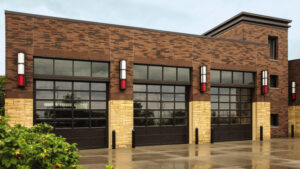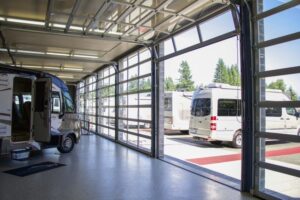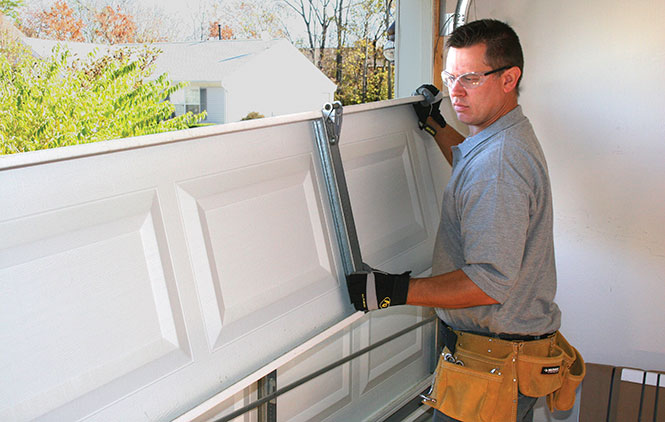Garage doors are a convenient way to enter and exit your home, but when the power goes out or the opener malfunctions, you may need to open it manually. Knowing how to manually open a garage door can save you from being stuck inside or locked out. Follow these simple steps to safely open your garage door without an automatic opener.
Why You Might Need to Open Your Garage Door Manually
There are several reasons why you might need to open your garage door manually:
Power Outages: During storms or electrical issues, your garage door opener may become inoperable.
Opener Malfunctions: If the motor or remote control stops working, the door won’t open automatically.
Broken Springs or Cables: A mechanical failure can prevent the door from moving smoothly.
Emergency Situations: If you need to leave your home quickly, knowing how to open the garage manually is essential.
Step 1: Ensure Safety First
Before attempting to open your garage door manually, take these precautions:
Check for any obstructions. Clear out any objects that might be blocking the tracks.
Disconnect the power. Even if the power is out, it’s best to unplug the garage door opener to prevent any sudden movements.
Make sure the door is fully closed. Opening a partially open door can be dangerous, as it may suddenly drop.
Inspect the springs and cables. If you notice any broken or damaged parts, do not attempt to lift the door manually.
Step 2: Locate and Pull the Emergency Release Cord
Most garage doors come with an emergency release cord, usually red, hanging from the center of the door track. Here’s how to use it:
Find the emergency release handle attached to the cord.
Firmly pull the cord downward. This will disconnect the door from the automatic opener.
Test the door by gently lifting it a few inches. If it moves freely, you have successfully disengaged it.
The emergency release function allows you to operate the door without using the garage door opener. However, keep in mind that this means the door is no longer locked in place, so exercise caution when moving it.
Step 3: Lift the Garage Door Manually
Once the opener is disengaged, you can open the door by hand:
Stand in the center of the garage door for even lifting.
Use both hands to grab the bottom of the door.
Lift slowly and steadily until the door is fully open.
Secure the door in place if needed, using locking mechanisms or clamps.
If the door is too heavy to lift, this could indicate broken springs or other issues that require professional repair.
Step 4: Close the Garage Door Manually
To close the garage door, simply reverse the process:
Hold the door with both hands to prevent it from slamming down.
Lower it slowly until it reaches the ground.
Re-engage the garage door opener by pulling the emergency release cord toward the door until it clicks back into place.
If your garage door has a manual lock, make sure to secure it properly to prevent unauthorized access.
Common Issues When Opening a Garage Door Manually
Even though manually opening a garage door is relatively straightforward, there are a few common problems you might encounter:
1. The Door Won’t Move
If your garage door doesn’t budge even after pulling the emergency release cord, check for the following:
Obstructions in the tracks that might be preventing movement.
Locked garage doors—some doors have manual locks that must be disengaged before lifting.
Damaged rollers or tracks that could be causing friction.
2. The Door Feels Extremely Heavy
A garage door that is too heavy to lift manually may have a broken torsion spring. The torsion spring helps balance the door’s weight, making it easier to lift. If the spring is broken, do not attempt to open the door—this is a job for professionals.
3. The Door Slams Down When Lowered
If the garage door doesn’t stay open or closes too quickly, it could be due to:
Broken or weakened springs that are no longer providing counterbalance.
Damaged cables that affect the door’s stability.
Worn-out rollers causing an imbalance in movement.
If you experience any of these issues, it’s best to call a garage door professional.
Garage Door Maintenance Tips to Avoid Manual Operation Issues
To reduce the chances of needing to open your garage door manually, follow these maintenance tips:
- Lubricate moving parts regularly, including rollers, hinges, and tracks.
- Inspect the garage door springs for signs of wear and tear.
- Check the cables for fraying or damage.
- Test the balance of the door by disconnecting the opener and lifting it manually.
- Clean the tracks to remove dirt, debris, and buildup.
Regular maintenance can extend the lifespan of your garage door system and prevent unexpected failures.
How to Open a Garage Door After a Power Outage?
To open a garage door after a power outage, pull the emergency release cord to disconnect the door from the opener, then lift the door manually. Once power is restored, re-engage the opener by pulling the cord again and running the opener.
Can Electric Garage Doors Be Opened Manually from the Outside?
Yes, if your garage door has an emergency release lock, you can use a key to unlock and pull the release cable, allowing manual operation. If no external release is installed, you may need to access the garage from another entry point.
Do All Garage Doors Have a Manual Override?
Most modern garage doors have an emergency release cord for manual operation, but some older or custom models may not. If unsure, check your garage door manual or consider installing an external manual release kit.
Can Automatic Garage Doors Be Opened Manually?
Yes, by pulling the emergency release cord, you can disengage the garage door from the opener and lift it manually. If the door is too heavy to lift, it may have a broken spring or another mechanical issue requiring professional repair.
Knowing how to manually open a garage door is a valuable skill, especially during power outages or emergencies. By following the steps outlined above, you can safely and effectively open and close your garage door without relying on the automatic opener. However, if you encounter any issues, it’s always best to contact a professional for repairs and maintenance.
Need Garage Door Repairs? Contact Us Today!





